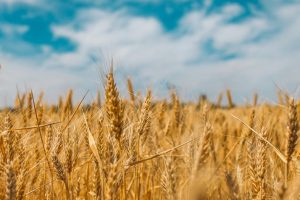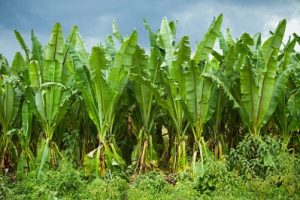
BY FIKADU BELAY
Environmental deterioration is one of the biggest challenges the world is now facing. It is a phrase used to indicate the presence of harmful and undesirable chemicals in the environment that have a negative impact on living things and natural ecosystems. This problem has gotten worse as a result of modern industrialization and population growth. Pollution has the potential to have a harmful effect on both the environment and human health. Pollution of the environment also involves water pollution.
In Ethiopia, water pollution has become a significant environmental issue. As the nation’s population expands, so does its need for water, which raises pollution levels in water sources. Ethiopia deals with a variety of water pollution issues because of increased modern industrialization and population development. This issue has become more serious as pollution can negatively affect both the environment and human health. Environmental contamination includes polluting the water. Rivers become contaminated when garbage from factories and other industrial growth enters them, according to Daniel Woldemichael, a lecturer in the environmental toxicology department at Hawassa University who is also undertaking research with his team. River pollution disturbs the environment and causes severe harm to both people and wildlife.
Untreated wastewater flowing into aquatic bodies is one of the main causes of water pollution. Waste management systems are often insufficient or nonexistent in Ethiopia’s urban regions, causing many homes and companies to dump their sewage and industrial effluent directly into lakes and rivers. Industrial processes that release toxic waste include mining, leather tanning, Animals are impacted by water contamination. Among them are fish. The consumption of fish, an aquatic animal, is substantial in many nations all over the world. In addition to enhancing meal nutrition, this will also open up work prospects. Ethiopia has several lakes, rivers, ponds, and man-made dams that are perfect for fish farming, according to Fasil Dawit (PhD), Head of the Fisheries Development Desk of the Ministry of Agriculture. They contain 200 distinct fish species. Forty of the 200 fish species exist alone in Ethiopia.
Only six species are eaten as food: Nile perch, Tilapia, Bagrus, Barbus, Catfish, and Carp. The Gambella and Benishangul regions, for example, use additional species as food sources. Fish products are becoming increasingly popular in Ethiopia, due to their rich taste and high nutritional value. Ethiopia is home to several freshwater bodies, such as the Blue Nile, Omo River, and Awash River. These water bodies provide an abundant source of fish products that range from small sardines to larger Nile perch and tilapia. “Dried fish” is one of Ethiopia’s most popular fish items. In Ethiopia, dried fish is a well-liked snack and is also used in soups, sauces, and stews. Those who cannot afford meat products need a good supply of protein, and dried fish fills that need.
Smoked fish is an additional fish product that is widely used in Ethiopia. In order to make smoked fish, fresh fish is smoked for a number of hours over wood. Fish, used as an element in numerous meals, is given a characteristic smoky flavor through this method. In the southern regions of Ethiopia, smoked fish is especially popular. Fresh fish is also becoming more popular in Ethiopia, especially in urban areas. With the growing middle class, there is an increasing demand for fresh fish products, and many supermarkets and restaurants are now offering a variety of fish products. Nile perch and tilapia are the most commonly sold fresh fish in Ethiopia, and they are usually sold whole, cleaned, or filleted.
Fasil noted that in the first ten months of the fiscal year, 88.8 thousand tons of fish were produced. The annual production goal of 90% can be achieved; however, the output that has already been achieved needs to be increased, so care must be taken. Ethiopia’s inability to produce an adequate amount of fish presents difficulties for the nation’s fish farmers. Ethiopia lacks direct access to the sea. The majority of Ethiopian fishermen use traditional fishing techniques, which results in low catches and poor quality fish products, since the country’s freshwater inland sources are scarce. These techniques can also contribute to overfishing and are not sustainable.
He emphasized that the use of illegal fishing nets by fishermen after they have been carried into the nation illegally is one of the causes of the decline in fish yield. Because of this, the production has decreased, and the net hole is quite small and contains fish that are not yet ready for food. Fish production cannot be generated and consumed as needed due to a shortage of legal fishing equipment, an absence of fish feed, and a fish breeding center that is not operating at full capacity. Additionally, he said that there is a lack of infrastructure, including insufficient roads and storage facilities, which make it challenging to transport and store fish goods. Ethiopians aren’t aware of the health benefits of eating fish.
Daniel further addressed the main difficulties associated with a nation’s decreased fish yield as a result of water contamination. He stated that individuals use them to treat diseases due to the fact that they pollute rivers, and when individuals are removed from their bodies, about 40–50% of the drug they get is eliminated in the form of urine. He said that individuals are also on outdated medications that have been used as preventive measures for humans at various times. According to the research team’s findings, which focused on 39 medications, we have confirmed the presence of roughly 29 drugs in the water. He claimed that among these drugs are anti-malarial, antiretroviral (anti-HIV-AIDS), and anti-cancer medications. These chemicals seriously injure both people and animals, particularly fish that reside underwater, which reduces their ability to reproduce.
Daniel stated that when an ingredient marketed as a form of contraceptive medication for women is released into a river, it transforms male fish into female ones, feminizing them. And he also said that this has made it impossible for fish production to continue in other nations. The presence of this substance in bodies of water has been confirmed in Ethiopia, where many are worried that it may eventually eliminate the reproduction of aquatic life. In addition, Daniel also said that the team conducted research on 33 pesticides and that, out of these, about 24 pesticides were discovered in the water. The majority of these pesticides are organochlorine chemicals, which are banned from importation globally and are used in horticulture and floriculture, Daniel said.
These chemicals, which can also cause other waterborne diseases like cholera, typhoid fever, and diarrhea, are a major cause of death and disability in the nation and also kill fish. Fasil stated that in order to alter fish nutrition and increase the nation’s profit from fish production, the ministry is collaborating with all required stakeholders to raise awareness of the problem and showcase the work’s results on multiple platforms. He also said that by tackling the industry’s bottleneck problems, efforts are being made to complete the technological resources in order to modernize the system.
Daniel emphasized the need for the government to implement a concrete plan to eliminate outdated pharmaceuticals and create a standard for the amount of chemicals in water coming from the agricultural sector. Shortage of funding, an absence of institutional setup, and a lack of stakeholder knowledge are some of the hindering factors for Ethiopia’s efforts to reduce and manage water pollution. In order to guarantee that Ethiopia’s water resources are safeguarded and used sustainably, the government has taken some action to address the issue, including the adoption of laws and regulations. However, more needs to be done.
THE ETHIOPIAN HERALD WEDNESDAY 31 MAY 2023





